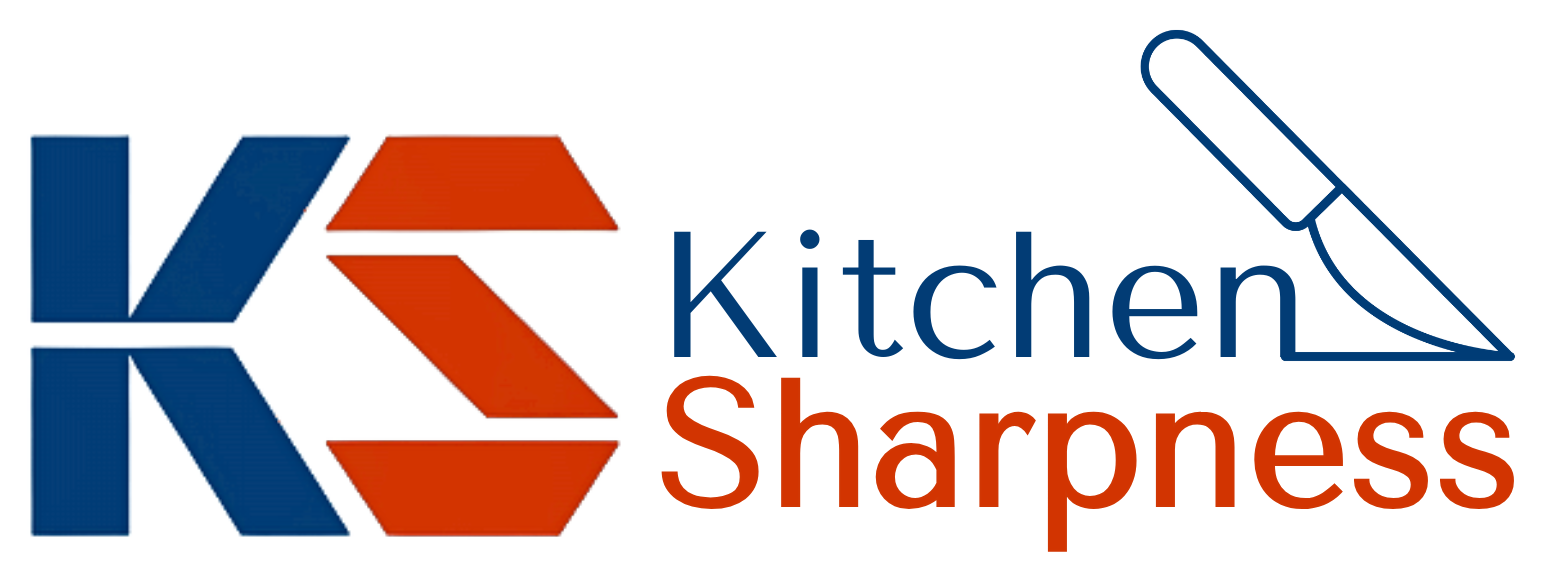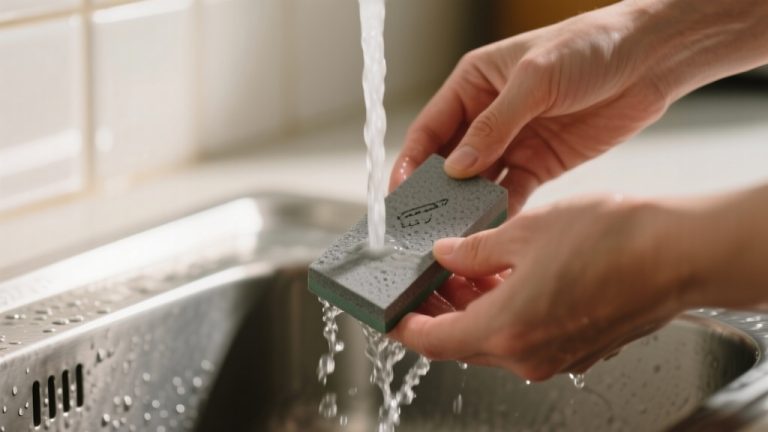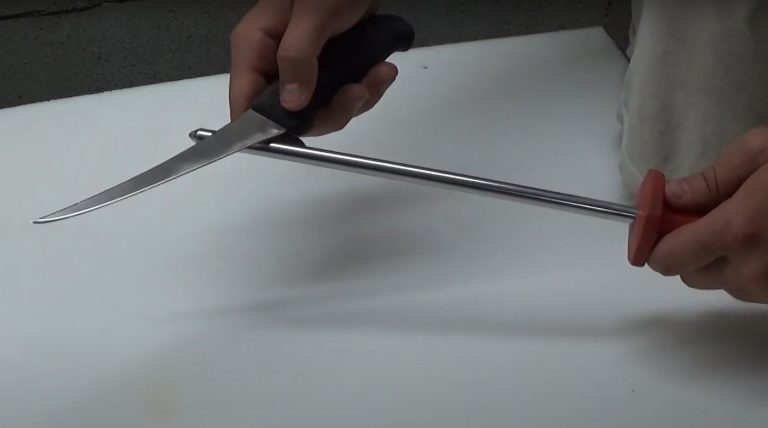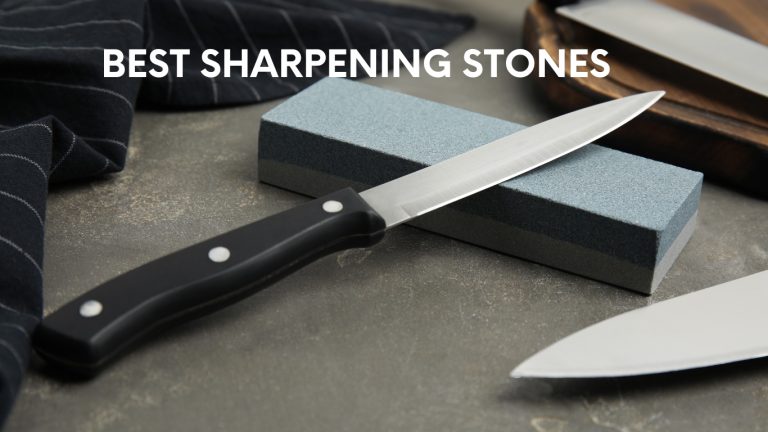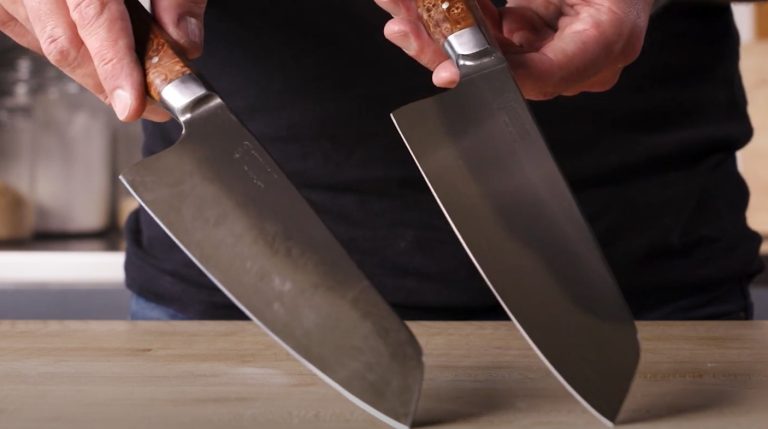Electric vs Manual Knife Sharpener: A Complete Comparison
When choosing between electric and manual knife sharpeners, consider your needs. Electric sharpeners are quick and require less effort, making them convenient for busy kitchens.
However, they may remove metal faster, potentially shortening your knife’s lifespan. Manual sharpeners offer precise angle control and allow for skill development but require practice and patience.
Each option has its own advantages, so understanding their differences can help you select the best sharpener for your knives and sharpening style. More insights await you.
Key Takeaways
- Electric sharpeners offer quick sharpening, completing the task in just a few minutes, ideal for busy kitchens.
- Manual sharpeners provide greater control and precision over sharpening angles, allowing for customization based on specific knife needs.
- Electric sharpeners can effectively sharpen various knife types, including serrated blades, while manual sharpeners may struggle with them.
- Manual sharpeners are generally more affordable, often priced under $50, making them a cost-effective option for many users.
- Safety is crucial; manual sharpeners require careful handling, while electric models necessitate keeping hands clear of blades and unplugging when not in use.
Knife Sharpening Overview
Knife sharpening is essential for maintaining the performance and longevity of your blades. This process involves restoring a knife’s cutting edge by removing metal and aligning the blade’s edge.
Regular sharpening keeps your knife effective and extends its lifespan. Consistent sharpening angle is crucial for performance and can help ensure the best results, as different methods may yield varying degrees of sharpness.
You can choose between electric and manual sharpeners, each offering unique advantages. Electric sharpeners provide speed and ease, making them great for frequent use, while manual sharpeners allow for greater control over the sharpening angle, though they require more skill and practice.
Electric sharpeners like the Chef’s Choice 15XV are designed specifically for maintaining kitchen knife sharpness, making them an ideal choice for home cooks. Common tools include whetstones, which demand patience, and sharpening steels, designed for honing rather than sharpening.
Manual Knife Sharpeners Explained
When you opt for manual knife sharpeners, you gain enhanced control and precision over the sharpening process. This hands-on approach allows you to adjust the angle and pressure according to your knife’s specific needs, something electric models may not offer.
Manual sharpeners are generally more affordable, making them a cost-effective choice for both casual cooks and professional chefs alike. Many manual sharpeners also utilize abrasive surfaces to ensure effective sharpening results.
Control and Precision
While many chefs and home cooks appreciate the convenience of electric sharpeners, manual knife sharpeners excel in providing unparalleled control and precision during the sharpening process.
With manual options, you can customize the sharpening angle, ensuring peak performance for various knives.
Key benefits include:
- Angle Control: Tailor the angle precisely between 15° and 30° for different blade types.
- Customization: Adjust your technique to suit straight-edge or serrated blades.
- Edge Formation: Create distinct facets that enhance cutting efficiency.
- Skill Development: Mastering the technique improves your overall sharpening skills.
Cost and Affordability
Understanding the cost and affordability of manual knife sharpeners is essential for anyone looking to maintain their kitchen tools without breaking the bank.
Generally, these sharpeners are priced lower than electric models, often available for under $50. You can find basic options for as low as $17.50, making them accessible for home cooks. They require no electricity, leading to long-term savings on utility bills.
Despite their low cost, many manual sharpeners are durable, lasting for years with proper care. They offer excellent value, especially for infrequent sharpeners. Additionally, manual sharpeners are ideal for home cooks seeking affordability and safety, making them a practical choice for many.
While electric sharpeners can range from $50 to over $200, manual sharpeners remain a cost-effective choice for those looking to sharpen knives without a hefty investment.
Advantages of Electric Knife Sharpeners
Electric knife sharpeners offer numerous advantages that cater to both home cooks and professional chefs alike, particularly regarding speed and efficiency.
Electric knife sharpeners provide quick and efficient sharpening solutions for both home cooks and professional chefs.
Here are some key benefits:
- Fast Sharpening: You can sharpen your knives in just a few minutes, saving valuable time.
- Effortless Process: Minimal effort is required, making them ideal for busy kitchens. This is especially important because sharp knives are safer than dull knives, reducing the risk of kitchen accidents.
- Consistent Results: Built-in guides guarantee uniform sharpening angles, providing even sharpness across all your knives.
- Wide Compatibility: They can handle various types of knives, including serrated and specialty blades, adapting to your specific kitchen needs.
Key Differences Between Manual and Electric Sharpeners
When it comes to sharpening knives, the choice between manual and electric sharpeners can considerably impact your experience and results. Manual sharpeners offer you greater control over the sharpening angle, ensuring precision tailored to your knife type.
However, they require skill and practice for consistent outcomes. In contrast, electric sharpeners excel in speed and ease of use, making them ideal for busy kitchens.
They accommodate various knife types, including serrated blades, but may lead to quicker metal removal, potentially shortening your knife’s lifespan. Additionally, understanding the different types of sharpeners available can help you make a more informed decision based on your needs.
| Feature | Manual Sharpeners |
|---|---|
| Angle Control | High (customizable) |
| Speed | Slower |
| Skill Requirement | High (requires practice) |
| Versatility | Limited (not for serrated blades) |
Sharpening Techniques for Different Knife Types
When sharpening different types of knives, it’s essential to understand the specific techniques that yield the best results. Straight-edged knives typically require a 20-degree angle for effective sharpening, while serrated knives demand specialized tools to preserve their unique design.
Additionally, understanding the nuances of specialty knives, such as Japanese blades, can greatly enhance your sharpening skills and maintain their performance over time. A sharp knife not only improves the precision of your cuts but also enhances your overall cooking efficiency.
Straight Edge Knives
Sharpening straight edge knives requires a careful approach to achieve ideal performance and longevity.
To effectively sharpen your straight edge knives, consider these techniques:
- Angle Control: Use manual sharpeners for precise angle adjustments, vital for an excellent edge. Properly sharpened knives significantly enhance cutting efficiency in the kitchen.
- Edge Consistency: Maintain a steady angle throughout the sharpening process to guarantee a symmetrical blade.
- Burr Formation: Raise a burr on both sides by alternating passes, which is essential for achieving sharpness.
- Regular Maintenance: Hone your knife with a steel rod between sharpening to preserve the edge, as regular sharpening prolongs the knife’s lifespan and performance.
Serrated Edge Knives
Straight edge knives require meticulous sharpening techniques to maintain their performance, but serrated edge knives present a different set of challenges. The unique toothed design of serrated knives makes them ideal for cutting tough materials, yet sharpening them demands specialized techniques.
You’ll need tapered diamond or ceramic sharpening rods and tapered rods that fit the serration size. Use short strokes to avoid excessive material removal, and adjust your angle based on wear. As you sharpen, a burr will form, signaling progress remove it with light passes on the flat side.
While electric sharpeners offer speed, they often lack the angle control essential for effective serrated knife sharpening, making manual methods preferable for precision and maintenance.
Specialty Knife Techniques
Different knife types require tailored sharpening techniques to maintain their ideal performance and longevity.
Here’s how to sharpen some common knives effectively:
- Chef’s Knives: Sharpen at a 20-degree angle using a sweeping motion on whetstones, starting with coarse grit and finishing with fine grit. Regular honing keeps the edge sharp, and consistent angle is crucial for effective sharpening.
- Paring Knives: Use a 15-degree angle and shorter strokes, focusing on the tip. Apply gentle pressure to preserve the blade’s integrity.
- Japanese Knives: Sharpen single bevels on one side at 10-15 degrees with fine grit whetstones, applying light pressure to maintain shape.
- Utility Knives: Maintain a consistent 20-degree angle, using both coarse and fine grits, similar to chef’s knives for versatility. Mastering these techniques enhances your knife’s efficiency.
Safety Considerations in Knife Sharpening
When engaging in knife sharpening, prioritizing safety is essential to prevent accidents and injuries.
For manual sharpeners, wearing protective gloves and using a non-slip surface are vital. Always maintain a stable workspace, free from distractions, and practice controlled movements to avoid slips. Regular maintenance, such as frequent honing, can help keep your knives safe and ready for use.
With electric sharpeners, read the manufacturer’s instructions and keep your hands away from the blades during operation. Unplug the sharpener when not in use to prevent accidental activation, and wear safety goggles to shield your eyes from debris.
Find the Best Knife Sharpener for You: Critical Factors to Consider
How do you decide between an electric and a manual knife sharpener? To make the best choice, consider these key factors:
- Ease of Use: Electric sharpeners are faster and require less effort, while manual sharpeners demand skill and practice.
- Control and Customization: Manual options allow for better angle control and customization based on your knives, offering precision in sharpening.
- Cost and Budget: Manual sharpeners are typically cheaper, perfect for occasional use, while electric sharpeners are an investment for frequent users.
- Portability and Practicality: If you need something portable, manual sharpeners are ideal for outdoor settings, whereas electric ones are best for home use. Additionally, understanding sharpening angles can significantly impact the effectiveness of both types of sharpeners.
Maintenance and Care for Knife Sharpeners
Maintaining your knife sharpener is essential for ensuring ideal performance and longevity, as neglect can lead to ineffective sharpening and potential damage. For electric sharpeners, regularly clean the device, replace worn parts, and store it in a dry place.
Unplug it when not in use, and refer to the user guide for specific instructions. Manual sharpeners require cleaning and drying of stones, proper storage, and regular practice of sharpening techniques.
Additionally, it’s crucial to keep your knife sharp by honing it frequently, as this ensures optimal performance during sharpening. Here’s a quick comparison:
| Electric Sharpeners | Manual Sharpeners |
|---|---|
| Clean with a dry cloth | Clean stones with water |
| Replace parts as needed | Replace stones when worn |
| Store in a dry location | Easy to transport |
Frequently Asked Questions
Can Electric Sharpeners Damage High-Quality Knives?
Using an electric sharpener on high-quality knives can be like using a jackhammer on delicate glass. You risk over-removing metal, which shortens your knife’s lifespan.
The preset angles may not suit your blade’s needs, leading to improper sharpening. Plus, the heat generated can alter the steel’s temper.
If you’ve invested in high-quality knives, consider manual sharpening or professional services to preserve their performance and longevity.
How Often Should Knives Be Sharpened?
You should sharpen your knives based on usage and their performance. If you use them daily, aim for every 1-2 months; for occasional home cooks, 2-3 times a year is usually sufficient.
Watch for signs like difficulty cutting or a dull feel. Regular honing can help maintain the edge between sharpenings, so consider doing that weekly or even daily for ideal performance.
Proper maintenance can extend your knife’s lifespan considerably.
Are There Specific Brands Recommended for Manual Sharpeners?
When choosing a manual knife sharpener, you’ve got several reputable brands to evaluate.
Spyderco’s Tri-Angle Sharpmaker is excellent for quick touchups, while Suehiro’s CERAX 1010 ceramic whetstone is versatile for various blades.
For budget options, Longzon’s 4-in-1 sharpener is worth a look.
Chef’sChoice offers advanced diamond technology with the ProntoPro, and Smith’s 50146 features adjustable angles for paring knives.
Each brand provides unique features to enhance your sharpening experience.
What Is the Lifespan of an Electric Knife Sharpener?
The lifespan of an electric knife sharpener varies based on several factors. If you use it frequently, it may wear down faster than one that’s rarely used.
High-quality models generally last longer, and proper maintenance like regular cleaning and correct storage can extend its life.
However, as the abrasive surfaces wear out, their effectiveness diminishes. Heat generated during sharpening also affects knife durability, so be mindful of how you use it.
Can I Sharpen Other Kitchen Tools With These Sharpeners?
Yes, you can sharpen other kitchen tools with both types of sharpeners, but their effectiveness varies.
Manual sharpeners allow you to adapt techniques for small blades and scissors, giving you more control.
However, electric sharpeners are generally less versatile and mainly focus on knives.
If you want to sharpen tools like cleavers or axes, you’ll likely need specialized sharpeners.
Always consider the specific tool and sharpener design for best results.
Decoding the Best Knife Sharpener for Every Chef
In the sharpening world, choosing between electric and manual sharpeners is like selecting a paintbrush for your masterpiece.
Each method has its unique strokes and techniques, catering to different preferences and knife types. Electric sharpeners offer speed and precision, while manual options give you control and skill development.
Ultimately, your choice should reflect your cooking habits and comfort level. By understanding these differences, you can guarantee your knives remain sharp, enhancing your culinary creations.
